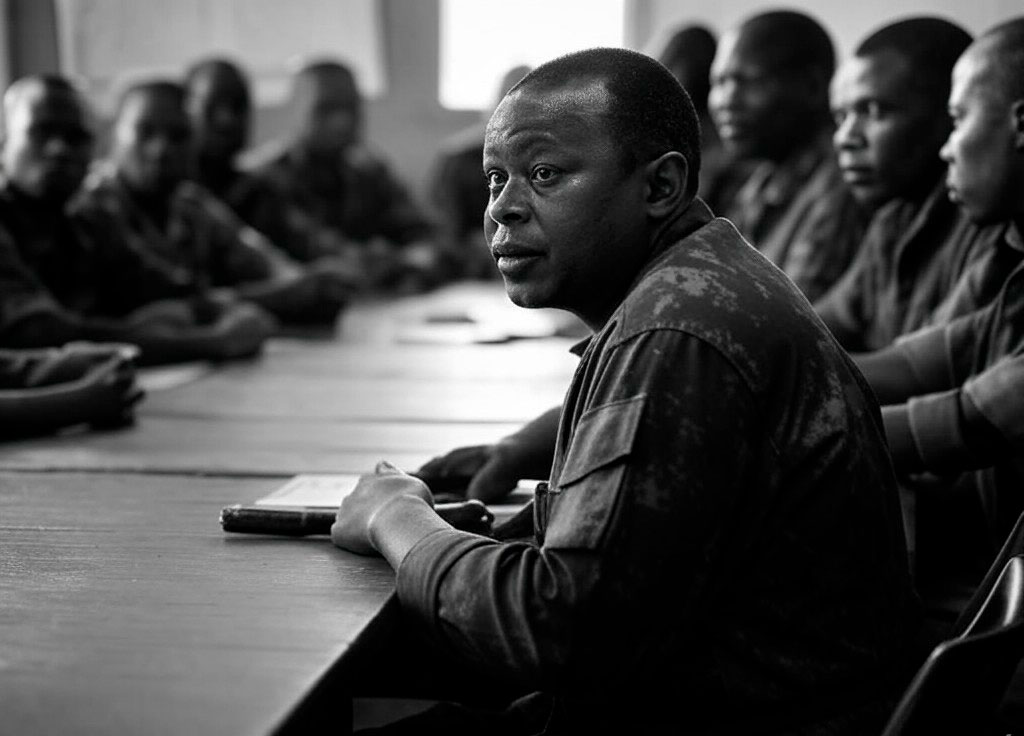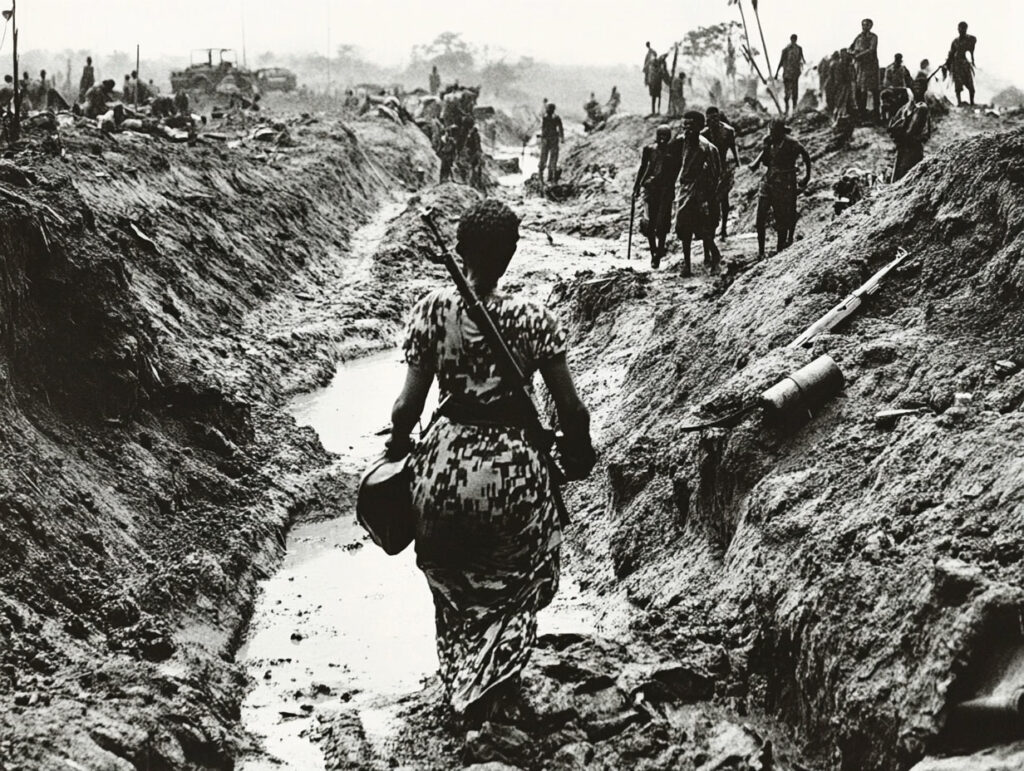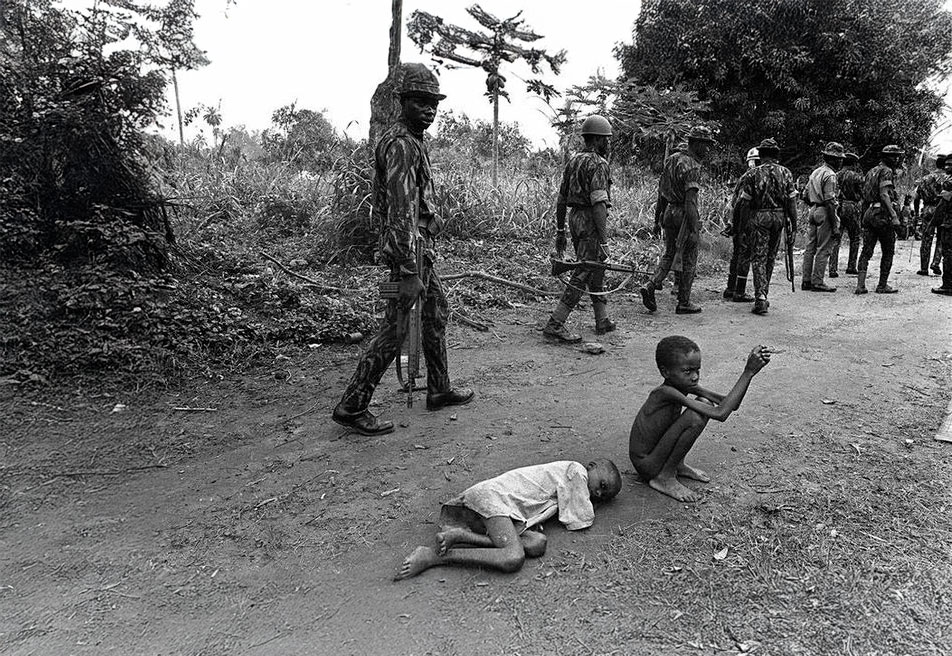Explore the comprehensive details of the Nigerian Civil War (1967–1970), including its causes, key players, major battles, decisive moments, and lasting consequences.
The Nigerian Civil War, also known as the Biafran War, occurred from 1967 to 1970. It was primarily a conflict between the Nigerian government and the secessionist state of Biafra, which represented the country’s southeastern region. The war stemmed from deep-rooted political, ethnic, and economic tensions, leading to a devastating humanitarian crisis. Over its three-year duration, the conflict resulted in significant military and civilian casualties, widespread famine, and long-lasting impacts on Nigeria’s socio-political landscape.
What Were the Reasons for the Nigerian Civil War (1967–1970)
The Nigerian Civil War was the culmination of multiple interrelated factors:
- Ethnic Tensions: Nigeria’s colonial history amalgamated diverse ethnic groups into a single nation. The three dominant groups were the Hausa-Fulani in the north, the Yoruba in the west, and the Igbo in the east. Post-independence, these groups vied for political power, leading to suspicions and rivalries. The Hausa-Fulani, being predominantly Muslim, had cultural and religious differences with the predominantly Christian Igbo and Yoruba populations. These disparities often resulted in mutual distrust and competition.
- Political Instability: Following Nigeria’s independence from Britain in 1960, the nation experienced a series of coups. The first coup in January 1966, led by predominantly Igbo officers, resulted in the assassination of key northern leaders. This event intensified ethnic suspicions. A counter-coup in July 1966, led by northern officers, saw the killing of Igbo military personnel and heightened anti-Igbo sentiments. These coups eroded trust among the ethnic groups and destabilized the nation’s political framework.
- Economic Disparities: The discovery of oil in the Niger Delta region, primarily in the southeast, added an economic dimension to the tensions. The southeastern region felt marginalized, believing that the federal government was exploiting its resources without adequate compensation or development in return. This economic grievance fueled desires for greater autonomy or outright independence.
- Massacres and Migrations: In 1966, widespread anti-Igbo pogroms in the northern regions led to the massacre of thousands of Igbos. These events prompted a mass exodus of Igbos back to their eastern homeland. The inability of the federal government to protect the Igbo population further deepened the sense of alienation and the desire for self-determination.
- Secession of Biafra: Given the culmination of these factors, Colonel Chukwuemeka Odumegwu Ojukwu, the military governor of the Eastern Region, declared the region’s independence as the Republic of Biafra on May 30, 1967. This declaration was perceived by the federal government as an act of rebellion, leading to military confrontation.

Who Was Involved in the Nigerian Civil War (1967–1970)
The Nigerian Civil War primarily involved two main entities:
- The Federal Military Government (FMG) of Nigeria: Led by General Yakubu Gowon, the FMG represented the Nigerian state. The federal forces comprised soldiers from various ethnic backgrounds, including the Hausa-Fulani, Yoruba, and minority groups. The FMG received international support from countries such as the United Kingdom and the Soviet Union, both of which provided military assistance and diplomatic backing.
- The Republic of Biafra: Spearheaded by Colonel Chukwuemeka Odumegwu Ojukwu, Biafra represented Nigeria’s southeastern region, predominantly inhabited by the Igbo ethnic group. Biafran forces were primarily composed of Igbo soldiers and volunteers. The secessionist state garnered support from countries like France, Israel, and some African nations, which provided limited military aid and humanitarian assistance.
Beyond these primary belligerents, several other actors played significant roles:
- International Humanitarian Organizations: Groups such as the International Committee of the Red Cross (ICRC) and various church-based organizations became deeply involved due to the humanitarian crisis, especially the widespread famine in Biafra. The images of starving children broadcast globally spurred international humanitarian interventions.
- Mercenaries and Foreign Soldiers: Both sides employed foreign mercenaries to bolster their military capabilities. Notably, Biafra enlisted European mercenaries to train their troops and sometimes lead combat operations.
- Media and Public Figures: International journalists and celebrities highlighted the humanitarian crisis, influencing public opinion and, in some cases, government policies regarding the conflict. The global media coverage brought attention to the severity of the famine and the plight of the Biafran people.
In essence, while the war was a domestic conflict between the Nigerian government and the secessionist Biafra, it had significant international dimensions, with various global actors influencing its progression and resolution.
The Leaders of the Nigerian Civil War (1967–1970)
The Nigerian Civil War featured prominent figures whose decisions significantly influenced the conflict’s trajectory:
- General Yakubu Gowon (Federal Military Government): Born in 1934, Gowon became Nigeria’s head of state after the July 1966 counter-coup. A career military officer from the Middle Belt region, he was seen as a unifying figure amidst Nigeria’s ethnic tensions. Gowon’s leadership focused on maintaining Nigeria’s territorial integrity. He implemented policies aimed at centralizing power and reducing regional disparities, such as the creation of 12 new states to weaken regional loyalties. His administration received support from the United Kingdom and the Soviet Union during the conflict.
- Colonel Chukwuemeka Odumegwu Ojukwu (Biafra): Born in 1933, Ojukwu was the military governor of Nigeria’s Eastern Region. Educated at the University of Oxford, he was known for his intelligence and charisma. In response to the perceived marginalization and violence against the Igbo people, Ojukwu declared the Eastern Region’s secession, forming the Republic of Biafra in 1967. He led Biafra throughout the war, advocating for self-determination and international recognition. Despite limited resources, Ojukwu’s leadership galvanized Biafran resistance against federal forces.
- Major General Philip Effiong (Biafra): Serving as Ojukwu’s deputy, Effiong assumed leadership of Biafra in the war’s final days. Born in 1925, he had a distinguished military career and was respected for his professionalism. After Ojukwu went into exile in January 1970, Effiong became the acting head of Biafra. Recognizing the dire situation, he initiated negotiations with the federal government, leading to Biafra’s surrender and the end of the war.
- Colonel Olusegun Obasanjo (Federal Military Government): Born in 1937, Obasanjo played a crucial role in the latter stages of the war. As the commander of the 3rd Marine Commando Division, he led successful offensives that penetrated deep into Biafran territory. His strategies were instrumental in bringing about Biafra’s eventual surrender. Obasanjo later became Nigeria’s head of state and, years after, its civilian president.
- Brigadier Benjamin Adekunle (Federal Military Government): Known as the “Black Scorpion,” Adekunle commanded the 3rd Marine Commando before Obasanjo. Born in 1936, he was noted for his aggressive tactics and played a significant role in the capture of key Biafran territories, including the vital oil-rich regions. His actions disrupted Biafra’s economic base and contributed to the federal government’s military advantage.
These leaders, among others, shaped the strategies and outcomes of the Nigerian Civil War through their decisions and actions.

Was There a Decisive Moment?
The Nigerian Civil War lacked a single decisive moment; instead, a series of events collectively led to Biafra’s defeat:
- Capture of Key Territories: Federal forces systematically seized strategic locations, including the oil-rich Niger Delta and major cities like Port Harcourt and Enugu. These losses deprived Biafra of essential resources and industrial capacities, weakening its war effort.
- International Isolation: Despite initial sympathy, Biafra failed to secure widespread international recognition. Only a few countries, such as Gabon, Haiti, Ivory Coast, Tanzania, and Zambia, officially recognized Biafra. The lack of diplomatic support limited access to international aid and military assistance.
- Economic Blockade: The federal government’s naval blockade effectively cut off Biafra from external supplies. This blockade led to severe shortages of food, medicine, and military equipment, contributing to widespread famine and civilian suffering.
- Internal Strain: Prolonged conflict and resource scarcity led to internal challenges within Biafra, including dissent and declining morale among both civilians and military personnel.
Collectively, these factors eroded Biafra’s capacity to sustain its secessionist efforts, leading to its eventual surrender in January 1970.
Major Battles of the Nigerian Civil War (1967–1970)
The Nigerian Civil War encompassed several significant battles that shaped its course:
- Operation UNICORD (July 2–12, 1967): At the war’s outset, the Nigerian Army launched an offensive targeting Biafra’s northern border regions, including Nsukka and Ogoja. The operation aimed to swiftly suppress the secessionist movement by capturing key towns. Despite initial resistance, Nigerian forces secured these areas, marking an early strategic gain.
- Midwest Invasion (August 1967): Biafran forces, under Brigadier Victor Banjo, advanced westward, crossing the Niger River and capturing the Midwestern Region, including Benin City. This bold move aimed to threaten Lagos and rally support from non-Igbo ethnic groups. However, the federal government quickly mobilized, recapturing the region within weeks.
- Operation Tiger Claw (October 17–23, 1967): Nigerian forces, led by Colonel Benjamin Adekunle, targeted the strategic port city of Calabar. The successful amphibious assault resulted in the capture of Calabar, depriving Biafra of a crucial maritime outlet and tightening the federal blockade.
- Abagana Ambush (March 31, 1968): In a significant tactical victory for Biafra, Major Jonathan Uchendu led an ambush against a Nigerian convoy at Abagana. Utilizing locally manufactured Ogbunigwe rockets, Biafran forces decimated the convoy, destroying numerous vehicles and inflicting heavy casualties. This success boosted Biafran morale and temporarily halted Nigerian advances.
- Siege of Owerri (October 15, 1968 – April 25, 1969): Owerri became a focal point of prolonged combat. Initially captured by Nigerian forces, it was later encircled by Biafran troops. After months of intense fighting, Biafran forces, under commanders like Major Timothy Onwuatuegwu, recaptured the city, demonstrating their resilience despite dwindling resources.
- Operation Tail-Wind (January 7–12, 1970): This was the final offensive of the war. Nigerian forces launched a coordinated attack on Biafran positions in Owerri and Uli. The operation led to the capture of these strategic locations, prompting Biafran leader General Odumegwu Ojukwu to flee into exile and culminating in Biafra’s surrender.
These battles underscore the strategic maneuvers and intense combat that characterized the Nigerian Civil War, reflecting the determination and challenges faced by both sides.
Was There a Turning Point?
The Nigerian Civil War did not have a singular turning point but was influenced by a series of critical events that shifted momentum:
- Capture of Port Harcourt (May 19, 1968): The fall of this vital port city to Nigerian forces severed Biafra’s primary access to the sea, exacerbating the effectiveness of the federal blockade. This loss significantly hindered Biafra’s ability to import arms and humanitarian aid, contributing to widespread famine and weakening its war effort.
- International Isolation: Despite initial sympathy and limited recognition from countries like Tanzania and Zambia, Biafra struggled to gain widespread international support. The lack of substantial external assistance and diplomatic recognition left Biafra isolated, limiting its capacity to sustain the war.
- Economic Blockade and Humanitarian Crisis: The federal government’s blockade led to severe shortages of food and medical supplies in Biafra. The resulting humanitarian crisis garnered global attention but also crippled Biafra’s internal stability and capacity to continue fighting.
Collectively, these factors eroded Biafra’s ability to maintain its secessionist campaign, leading to its eventual surrender in January 1970.

Consequences of the Nigerian Civil War (1967–1970)
The Nigerian Civil War had profound and lasting impacts:
- Human Casualties: Estimates of the death toll range from 500,000 to 3 million people, with many deaths resulting from starvation due to the blockade and destruction of agriculture.
- Economic Impact: The war devastated infrastructure in the Eastern Region. Post-war reconstruction was slow, and the region faced economic challenges for years. The federal government implemented policies to reintegrate and rebuild, but disparities remained.
- Political Repercussions: The war reinforced the federal government’s authority and led to increased centralization of power. The creation of new states aimed to weaken regional loyalties and prevent future secessionist attempts.
- Social Consequences: The conflict deepened ethnic tensions, particularly against the Igbo population. Reconciliation efforts were initiated, but mistrust lingered, influencing Nigeria’s social dynamics.
- Humanitarian Awareness: The war highlighted the devastating effects of blockades and starvation as tactics. It spurred international humanitarian efforts and set precedents for global responses to similar crises.
The Nigerian Civil War left an indelible mark on the nation’s history, shaping its political, economic, and social trajectories in the decades that followed.
Back to the Wars section